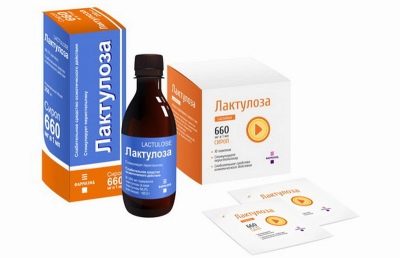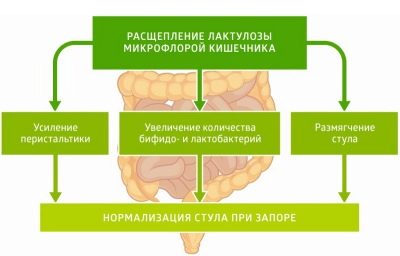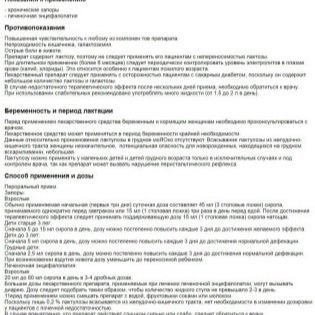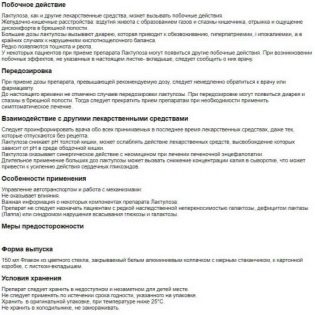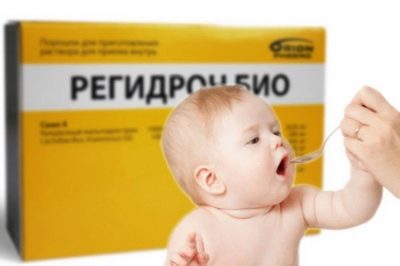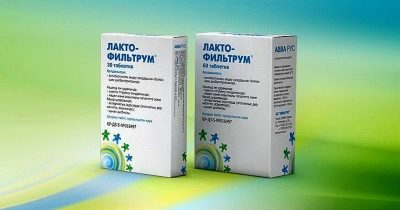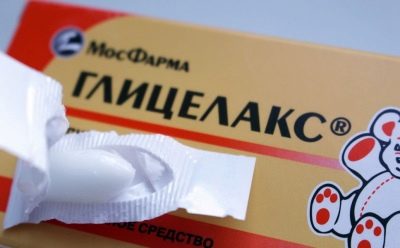Lactulose syrup for children: instructions for use
Constipation often occurs in childhood and can develop even in newborn babies. However, do not rush to give the crumbs a laxative. First you need to consult a pediatrician. The doctor will decide whether the toddler needs any medication, and may prescribe a remedy called Lactulose that is in demand in children.
Release form and composition
The drug is represented by only one form - syrup, the volume of which in one bottle is 200, 500 or 1000 ml. It has a sweet taste and a viscous consistency. Such a liquid is clear and usually colorless, but it also happens with a brown or yellow tint.
The main ingredient of the syrup is also called lactulose and is contained in 100 ml of syrup in the amount of 66.7 grams. Inactive ingredients are citric acid and water. For ease of dosing, a measuring cup is attached to the vial.
Operating principle
Lactulose is a disaccharide, which does not exist in nature, that is, it is obtained by synthetic means. For several decades it has been known about its laxative properties and at the moment such a substance is considered one of the most effective and safe means with a laxative effect. For this reason, it is often added to food (yogurt, milk, kefir, oatmeal) and even in infant formula.
Once in the small intestine, lactulose is not broken down and is not absorbed, so it is transported with food masses further into the colon, where it is used by bifidobacteria and other beneficial microbes as a substrate for their reproduction. Microorganisms process this disaccharide into organic acids, which have osmotic activity.
It is thanks to this activity in the intestinal lumen that water is retained, which leads to an increase in feces and activation of peristalsis. The result of such changes will be the stimulation of emptying. Wherein the effect of "Lactulose" appears 1-2 days after application, as it takes some time for syrup to enter the intestine and its splitting by bacteria.
Indications
Most often, "Lactulose" is prescribed for constipation, because such a drug helps to establish a physiological bowel movement. It is also used in hemorrhoids, after surgery on the rectum or before examinations, for example, as a preparation for irrigoscopy. Another reason for the use of syrup can be a serious liver disease that led to encephalopathy. In these patients, "Lactulose" reduces the level of toxic nitrogen-containing substances, which helps to prevent the precom and coma.
From what age is prescribed?
The use of "Lactulose" is possible from birth. This medicine is given to both babies and older children, but only on the recommendation of a doctor. The use of such syrup without an appointment and a preliminary examination of the doctor is not recommended, because in some cases it can harm or be ineffective.
Contraindications
Treatment with Lactulose is prohibited in such situations:
- with intolerance to any ingredient of the syrup;
- if intestinal obstruction or appendicitis is suspected;
- with galactosemia;
- in the presence of ileo - or colostomy;
- with rectal bleeding;
- with glucose-galactose malabsorption;
- with intolerance to fructose or galactose;
- with a lack of lactase in the body.
If a child has diabetes, apply the syrup under the supervision of a physician.
Side effects
Since Lactulose stimulates the growth of microflora and in the process of vital activity of beneficial bacteria gases form, often their number becomes excessive (this often happens in children under 2 years of age), which causes abdominal pain and other uncomfortable symptoms. To exclude such a side effect, treatment is recommended to start with small doses and increase the dosage gradually.
The use of high doses of syrup provokes diarrhea, for the elimination of which you should cancel “Lactulose” or reduce the amount of the drug per day. If diarrhea is severe, then using the medication will lead to an imbalance of electrolytes, which will manifest as headache, arrhythmia, seizures, weakness and other symptoms.
Instructions for use
Giving “Lactulose” to young patients is usually recommended once a day. The entire daily dose of syrup is given at one time, for example, after breakfast. Babies are advised to give the remedy before feeding, so that the crumb does not give up the syrup and not regurgitate the drug. For dosing using a measuring cup, and the smallest children can be given medicine from a syringe without a needle.
The duration of the use of the drug is determined individually and can range from several weeks to 4 months. Only 5 ml of medicine per day is enough for babies of the first year of life. For children 1-7 years old, “Lactulose” can also be given in 5 ml, but let's accept intake and in 10 ml per day. Patients older than 7 years at a time give 10-15 ml of syrup.
These are average daily dosages of the medicine, but it is necessary to start treatment with lower doses, for example, a 6-month-old infant with constipation can first be given only 1 ml of syrup. The next day, a single dose will be 2 ml, and so on. Having determined the effective dosage, the drug continues to be given in it.
If the effect does not appear when using 5 ml (recommended for babies of the first year of the dose), you should consult with your doctor. When encephalopathy prescribed higher doses.
Overdose
If a child accidentally drinks more syrup than it is supposed to by age, this will cause diarrhea and stomach pain. To eliminate such symptoms, “Lactulose” is immediately canceled and the patient’s condition soon returns to normal. If, due to diarrhea, dehydration begins or the ratio of electrolytes is disturbed, special preparations should be given to the child that will eliminate these effects, for example, “Regidron».
Drug interaction
"Lactulose" should not be given at the same time with any other drugs, so that it does not affect their effectiveness. If the child is to take some other medicine, there should be a break of about 2 hours between this intake and the use of Lactulose. When treating with antibiotics and antacids, the therapeutic effect of lactulose is reduced.
Terms of sale and storage
"Lactulose" is a non-prescription agent, but when buying for a child, it is first recommended to consult a doctor. Keep the syrup at home should be at a temperature below 25 degrees Celsius, putting the bottle in a place hidden from children. Shelf life of the drug - 3 years.
Reviews
Children almost always respond well to the use of Lactulose. According to moms, this drug has a mild effect and good tolerance. In addition, it is very convenient to give it to kids, because it is a syrup. Side effects during the reception of "Lactulose", for example, allergies, parents rarely noted.
The advantages of the drug also include an affordable price, ease of dosing and the possibility of using from birth. In rare negative reviews complain about the cloying taste, lack of therapeutic effect or addiction with prolonged use.
Analogs
The most well-known analogue of "Lactulose" can be called the drug "Duphalac". This is also a sweet syrup, which is sold in bottles of 200, 500 and 1000 ml, as well as in 15 ml portion bags.The concentration of lactulose in this medicine is the same, and the indications for admission, the possible harm if the dose is exceeded, and the side effects of Dufalac and Lactulose are the same.
Other lactulose-based drugs, for example, "Normase, Goodluck, Romfalak and Portalak. All of these drugs are also syrups and are used in the same situations as their counterparts. In addition, they, like Lactulose, are also appointed from birth.
There are also combined drugs in which lactulose is only one of the components. For example, in the composition of "Lactofiltrum»It is supplemented with hydrolytic lignin - a substance with the properties of enterosorbent. Such tablets are prescribed to children older than a year for dysbacteriosis, atopic dermatitis and other problems. They help get rid of abdominal distention, bad breath and other uncomfortable symptoms.
In addition to products that contain lactulose, other medicines can also eliminate constipation in babies. These may be glycerol-based suppositories called “Glitselaks". After injection into the intestine, they cause a reflex activation of motility. In pediatric dosage such candles are used from three months.
Another demanded laxative drug with a physiological effect in childhood is called “Forlax". Macrogol is present in the composition of this powder, and after dilution the solution can be given to children older than 6 months.
What to do so that the child does not have constipation, see the following video.


